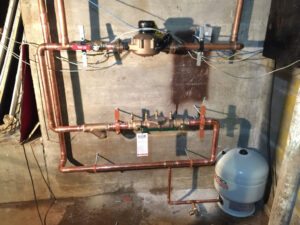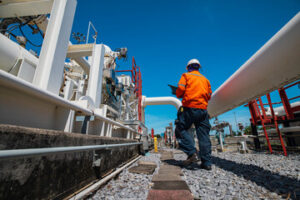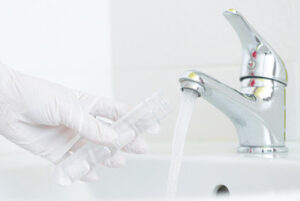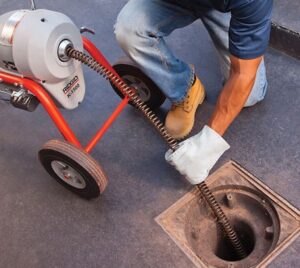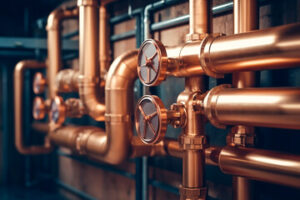Water heaters are designed to last many years, but factors like hard water and natural gas can shorten their lifespan. Knowing the tell-tale signs that your water heater needs replacement will help you prepare for a smooth transition.
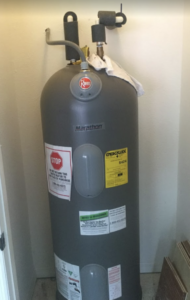
If your hot water smells like garlic or appears discolored, call the experts at Hot Water Heater Replacement Denver immediately. This could be an indication of a broken thermocouple or gas control valve.
If you’re noticing that your hot water tank isn’t heating or isn’t providing as much water as it once did, it may be time to consider replacing your thermostat. This is a common problem and usually the result of one of two issues. The first, and most obvious is that the water heater was improperly sized for your home. In this case, it’s best to just replace the unit with a larger one.
Another issue is that your thermostat might simply be set on the wrong temperature setting. The thermostat’s purpose is to control the heating element inside the heater so that it heats the water according to your desired temperature settings.
This is done by a bimetallic strip that expands and contracts based on temperature. When the metal reaches a certain temperature, it triggers an electric circuit that controls your heating element. Most modern thermostats have a digital display showing the current temperature and the current setting. Some also have a clock and day of the week settings.
If your thermostat is old and outdated, you might want to consider upgrading it to a smart version. While these aren’t typically as inexpensive, they tend to be much more energy efficient and can help you save on your electricity bill. Smart thermostats can be adapted to work with your existing heating and cooling system as well as your smart devices.
Thermostats need to be located in a place where they can get a full range of ambient temperature. They should not be placed in direct sunlight, near a window or door, or above air vents, as these can cause them to read incorrectly. Additionally, they shouldn’t be placed where steam might reach them as this can affect the operation of the thermostat.
Before beginning any repairs on your hot water heater, you should always shut off the gas supply to the unit by turning the valve on the nearest union a quarter turn. You should also disconnect the tank from the plumbing by unscrewing the connecting pipe with a pipe wrench and draining any water that remains in it. Lastly, you should remove the old unit and dispose of it properly.
Element
The element is the component that keeps water hot in your tank. It’s one of the most commonly replaced parts in hot water heaters and can be very expensive if you have to replace it. Luckily, it is relatively easy to repair.
To begin with, disconnect the two circuit wires attached to the element. Then, with a non-contact circuit tester, test for power. If you get a reading of 0 on the circuit tester or the needle doesn’t move, then the heating element is faulty and needs to be replaced.
Next, shut off the electric power to the water heater by turning off the breaker that goes to it. If you don’t know which breaker it is, then shut off the entire home’s electricity to be safe. After the power is off, drain the tank by opening the drain valve at the bottom of the water heater. It may take a while for the tank to completely drain.
Now it is time to remove the old element. When you are done, make sure to save the screws in a safe place so that you can put them back on when you install the new one. Before installing the new element, it is important to clean the threads and gasket area of the tank. It is also a good idea to wipe down the element itself and remove the “O” ring that seals it in the tank.
Then, screw the new element into place and tighten it. Be sure to use a socket wrench for this step. After that, it is a good idea to close the water heater drain and run a hot water tap in your kitchen for three minutes. Finally, reconnect the black and white wires to the element by wrapping them around the screw terminals in a clockwise direction.
If you are replacing an element, be sure to buy the same wattage as the original. If you do not, your new element will burn out quickly. Also, be sure to buy a high watt density element. These are less prone to rust than lower watt density elements and are typically the least expensive option.
Anode Rod
An anode rod is a long metal rod that runs down the center of your water heater tank. It’s made from aluminum, magnesium or zinc wrapped around a steel wire core. The purpose of an anode rod is to corrode more easily than your water heater, so that if you have mineral deposits in your water, they will corrode the rod instead of your hot water tank. This helps keep the inside of your water heater tank free of rust and corrosion. An anode rod is not permanent, and it will need to be replaced periodically.
The type of anode rod you use will determine how long it lasts. Magnesium is the most popular, but it tends to corrode quickly, especially if you have hard water. Aluminum rods are a good choice for most conditions, and they will usually last longer than magnesium ones. If you have extremely hard water, however, you may want to consider using a zinc-aluminum alloy rod. These will last longer than aluminum, and they can be less expensive than magnesium.
As the anode rod corrodes, it produces an aluminum oxide deposit that sometimes makes its way into your hot water tank and faucet aerators. This odorless gel substance can vary in consistency from a firm somewhat sticky curd to a thick running slurry. If you notice this deposit when cleaning out your faucet aerators, it is likely time to replace your anode rod.
When it’s time to replace the anode rod, first shut off your water heater and the hot water outlet on your water heater. Drain several gallons of water from the hot water tank. Then, remove the hex head on top of the water heater. This can be difficult if the rod is stuck from rust, and you may need to use spray lubricant. Once the hex head is removed, you can pull out the rod and examine it for signs of corrosion.
It’s recommended that you replace your anode rod once it reaches the bottom of the tank or when it is corroded beyond repair. A new anode rod will help protect your water heater from rust and prevent damage to the internal components, saving you money on repairs down the road.
Dip Tube
A dip tube performs a vital function in your hot water heater. It directs incoming cold replacement water to the bottom of your tank where it gets heated. Without the dip tube, cold water would mix with the hot water at the top of your tank and you would end up with tepid water for faucets and appliances. The dip tube is an unsung hero of the water heater.
The modern plastic dip tubes in most water heaters can be expected to last about a decade but they do sometimes break. They are often corroded by the minerals in hard water. The resulting erosion can cause the dip tube to lose its seal and allow leaking water to escape. When the dip tube breaks, it will no longer be able to transfer water from the inlet port to the bottom of the tank where it is heated. Cold water will mix with the hot water and the temperature of the water will drop.
Fortunately, replacing the dip tube is a relatively simple task and one that most people can handle on their own. First, you will need to shut off the power to the tank by switching off the circuit breaker. It is also a good idea to drain the tank and disconnect it from the hot water piping. You will need a pipe wrench to remove the inlet port nipple and a flat screwdriver to loosen the dip tube.
There are several different kinds of dip tubes available, from the basic flanged type to a special self-cleaning design that helps keep sediment out of your tank. Whichever one you choose, it should be cut to length before you install it. The tube should be positioned so that it is under the inlet port but above the burner at the bottom of the tank.
